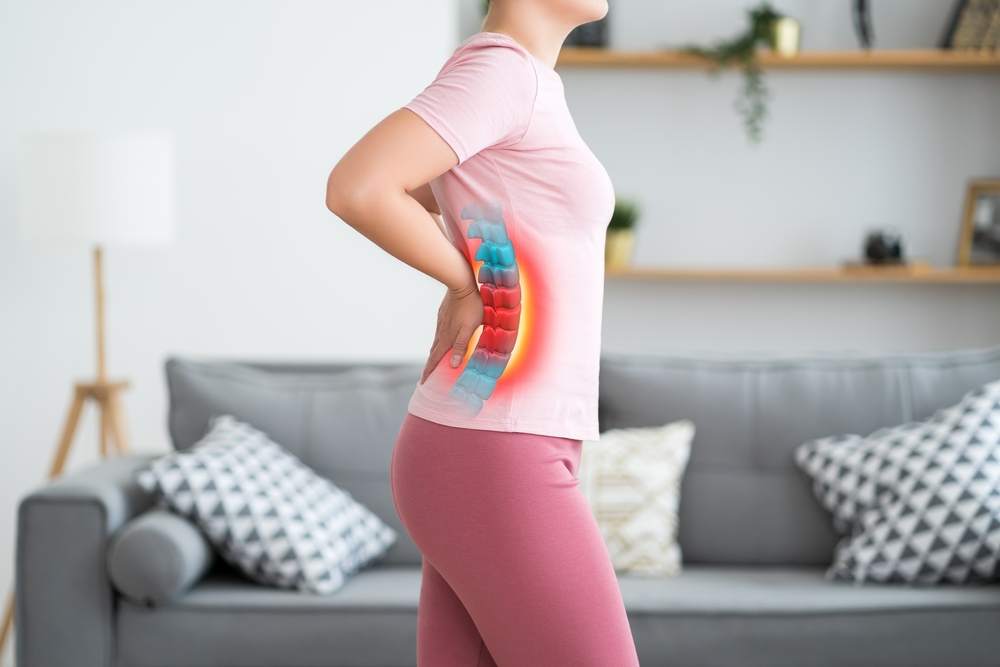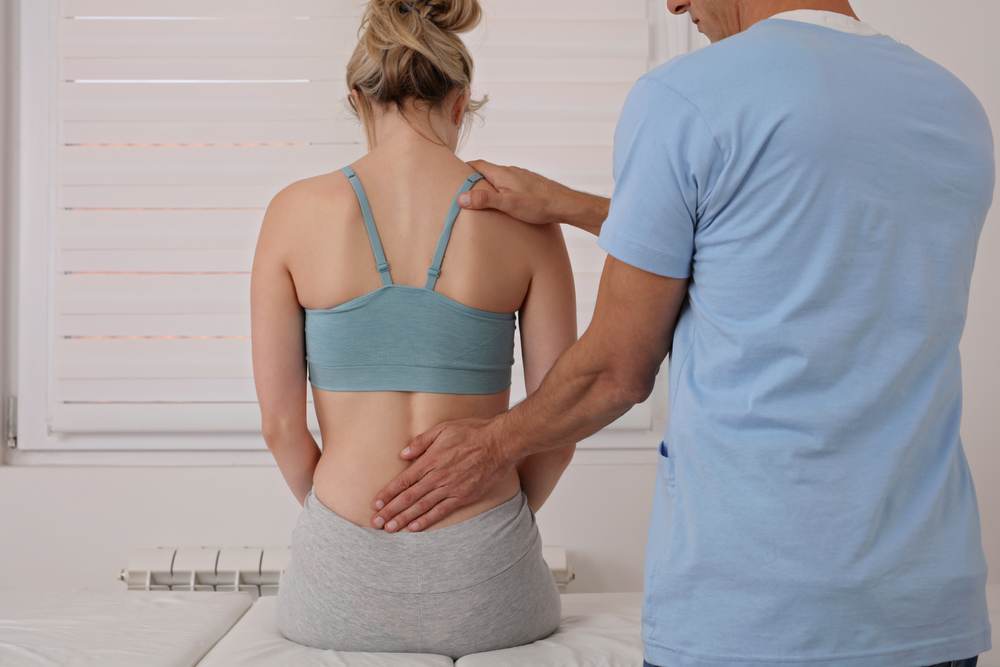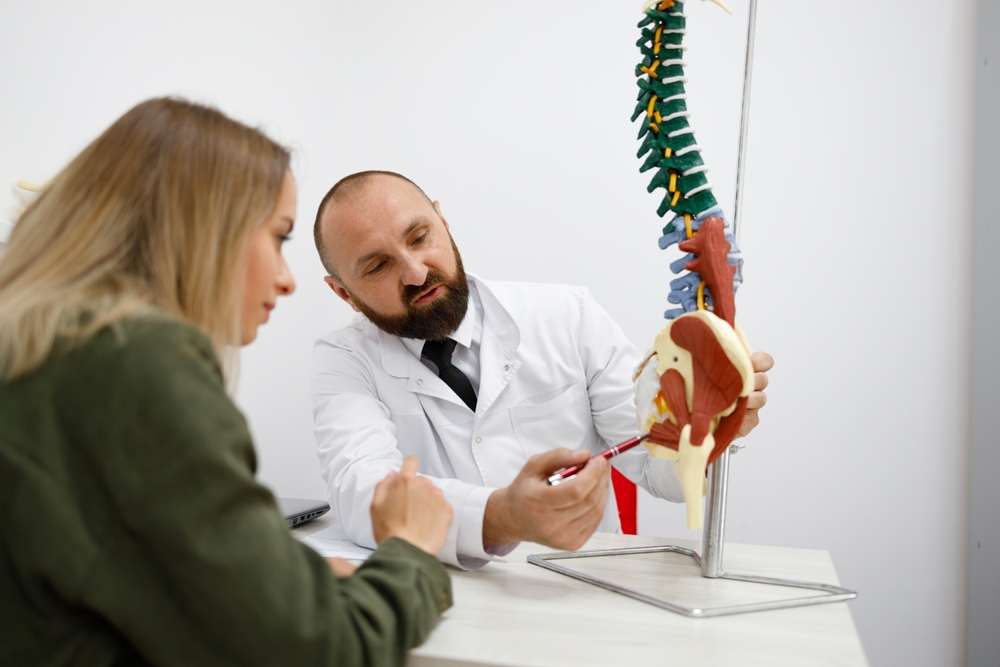 Being in a car accident is scary enough, but finding yourself with back pain afterward can be particularly frightening. The spine is vital for supporting our bodies as we move about the world, and any injury to it can reduce mobility, impair daily functioning, and lead to long-term pain and disability. Getting the right diagnosis promptly leads to better care and outcomes. The doctors at AICA Atlanta are available to guide your care every step of the way so you can resume your normal life as soon as possible.
Being in a car accident is scary enough, but finding yourself with back pain afterward can be particularly frightening. The spine is vital for supporting our bodies as we move about the world, and any injury to it can reduce mobility, impair daily functioning, and lead to long-term pain and disability. Getting the right diagnosis promptly leads to better care and outcomes. The doctors at AICA Atlanta are available to guide your care every step of the way so you can resume your normal life as soon as possible.
Anatomy of the Spine
The spine is made up of vertebrae, which are irregular bones with varying shapes and sizes. There are seven cervical vertebrae in the neck, twelve in the thoracic spine (upper body), and five in the lower back (lumbar). There are five each of the sacral and coccygeal vertebrae, but each of these sections are fused together to make a single structure, commonly called the tailbone. All of these bones are round, with flat tops and bottoms comprising the body of the vertebrae, similar to a hockey puck. The body of each vertebra has three sections, called the anterior (front), middle, and posterior (back) columns.
Coming off of the vertebral bodies are bony prominences called spinal processes. As the spine moves down, each set of vertebrae gets additional processes to stabilize the spinal column even further. The cervical spine has a small body with a single spinous process. The thoracic vertebrae have the spinous process, as well as two transverse processes which come out of the posterior sides of the body. The lumbar spine contains the same processes as the thoracic spine, as well as two articular processes that sit between the spinous process in the center and the transverse processes on the sides. The processes don’t just jut outward from the body but also extend above and below the body to interlock with the processes of the vertebrae they are adjacent to. This interconnected but flexible system allows for flexion and extension of the spine while protecting the delicate spinal cord within.
Other structures on the vertebrae include the facets, the lamina, and the pedicles. The lamina and the spinous process form an arch-shaped opening, called a foramen, at the center of the vertebra that allows the spinal cord to travel through and be protected by the bones. Each vertebra is cushioned by a cartilaginous disc that helps the bone absorb the pressures put upon the spine by our body weight and gravity.
What Is a Compression Fracture?
 Most people are familiar with the idea of a broken bone, like the lower leg or forearm, being a single break of a long bone. They might imagine a break as being like a twig that is snapped, with two ragged ends separated by a fracture. Fractures such as a compound fracture, the classic broken bone in two pieces, are often caused by blunt force trauma or falls from a significant height. Certain twisting motions can also break bones.
Most people are familiar with the idea of a broken bone, like the lower leg or forearm, being a single break of a long bone. They might imagine a break as being like a twig that is snapped, with two ragged ends separated by a fracture. Fractures such as a compound fracture, the classic broken bone in two pieces, are often caused by blunt force trauma or falls from a significant height. Certain twisting motions can also break bones.
A compression fracture occurs when the forces against the spine are excessively perpendicular or along the length of the spinal column. These axial forces put a great deal of pressure on the individual vertebrae that make up the entire spine. If there is any weakness in the vertebrae, or the forces exceed the capacity of the bone to withstand it, then the bone will break when the compressive pressure occurs.
The vertebral compression fracture is different from other fractures, though. They can occur when the pressure above or below the body of the vertebrae becomes too much for the bones to take, and it begins to crack and break. This kind of fracture is less like a stick being broken and more like someone crushing an antacid tablet. Compression fractures occur in the anterior part of the vertebral body only. They can occur due to motor vehicle accidents, falls, and even while moving in your sleep if your spine is vulnerable enough to this type of injury.
Causes
Compression fractures are more common in older people who have existing weaknesses in the bones of the spine. As we age, our diets change and we reduce how often we perform weight-bearing exercises. This leads to the bones in our bodies weakening and becoming fragile. This loss of the mineral components that build the tissue of a bone is called osteoporosis and predisposes the individual to an increased risk of all fracture types, particularly compression fractures of the spine. They are so common in osteoporosis that 25% of women over the age of 50 have one or more.
Car accidents are another cause of vertebral compression fractures, which represent 189 out of 329 car accident-associated spinal fractures of the thoracic and lumbar spine. This includes all age groups, with a slightly higher risk existing for older patients with osteoporosis. There is also an increased rate of compression fractures of the vertebrae when wearing a seatbelt, most likely due to improper placement of the lap belt portion.
Symptoms
Symptoms of a vertebral compression fracture may be easy to overlook initially after a car accident, particularly if there are other injuries. In many cases, if there are signs of injury to the abdomen or chest, there is a high likelihood of a vertebral fracture having occurred as well. Bruising or pain in these areas should alert the provider to assess the spine more thoroughly. While these fractures are often painful, many older adults will have them diagnosed incidentally when looking for other things. Since they can cause degeneration of the rest of the spine, early diagnosis is critical.
Symptoms to look for:
- New onset pain in the spine
- Pain relieved by rest and worsened by being upright or walking
- Inability to bend or move the spine normally
- A new hump in the back, called kyphosis or a widow’s hump that forces your upper body to lean over
- Changes in the function of the legs, bladder, or bowel
Diagnosis
Diagnosis of a compression fracture begins with taking a detailed history of the events leading to the onset of pain and injury. For those who have been in a car accident, this might include how fast the car was going, what kind of collision it was, what other injuries occurred, and whether or not you were wearing a seat belt. They will also want to know what factors you have found reduce the pain, such as being at rest, or make it worse, such as standing or walking.
It is also important to let your doctor know about any medications you take since some medications increase the risk of fractures, like long-term use of glucocorticoids. Other risk factors include pre-existing osteoporosis, being female, and old age. Unfortunately, even without any risk factors, vertebral compression fractures account for the majority of spinal fractures in car accidents.
Once the doctor knows what to look for, they will carefully examine you for any bruising, pain, deformity, or dysfunction that may indicate a vertebral compression fracture is present. They may palpate (touch) the back carefully to determine exactly where the pain is so they can order the right imaging studies. The doctor may also have you walk and move to assess your gait (how you walk) and limb function. Checking reflexes can show whether or not any nerves are involved as well. Let the doctor know if there is any change in your ability to urinate or defecate.
The only way to accurately diagnose a compression fracture is with an image that shows the broken bone clearly. To achieve this, the doctor caring for you may order any of the following tests;
- An X-Ray of the spine is usually ordered first since it can rule in a fracture quite clearly if seen but isn’t as useful for ruling them out.
- Computed Tomography (CT) scan of the spine is one of the best ways to look at the bones of the spine since it gives a clear image of each vertebra from several angles.
- Magnetic Resonance Imaging (MRI) of the spine is usually not necessary to diagnose a vertebral compression fracture but may be ordered if there are concerns about damage to the spinal cord or the nerves that branch from the spinal cord.
- A bone density scan is another option, usually used to test for any osteoporosis that may preclude the individual to compression fractures, but it also can show mild fractures that are not otherwise visible on imaging.
Treatment
 Treatment for vertebral compression fractures depends on the severity of the fracture and whether or not any nerves are injured due to the fracture. Care can range from simply managing pain and bracing the back while the fracture heals itself to requiring surgical repair of the break. Determining which course of treatment is best is one reason having a skilled doctor is so important in caring for such fractures. Often compression fractures require the help of other healthcare professionals, such as physical therapists, to heal well. The goal of any treatment is to reduce suffering and restore function as soon as possible while preventing any long-term complications.
Treatment for vertebral compression fractures depends on the severity of the fracture and whether or not any nerves are injured due to the fracture. Care can range from simply managing pain and bracing the back while the fracture heals itself to requiring surgical repair of the break. Determining which course of treatment is best is one reason having a skilled doctor is so important in caring for such fractures. Often compression fractures require the help of other healthcare professionals, such as physical therapists, to heal well. The goal of any treatment is to reduce suffering and restore function as soon as possible while preventing any long-term complications.
There are some things you can do at home to reduce your discomfort and improve healing while under the management of a doctor:
- Avoid any activity that causes pain unless you have been instructed to do otherwise.
- Take any medication that the doctor has prescribed to you as directed, even if it is over the counter.
- Participate fully in any ordered therapies, such as physical therapy.
- Apply heat or cold to the area, depending on which brings you the most relief.
- Be sure to get to all appointments with your doctor so they can oversee your care correctly.
Prevention
- Maintain a healthy weight
- Wear your seat belt correctly
- Always keep the lap portion low over the pelvis, along the top of your thighs
- Never wear it high over your abdomen
- Prevent osteoporosis.
- Consuming enough calcium and vitamin D as indicated by your doctor
- Engage in weight-bearing exercises daily
- Treat any existing osteoporosis promptly.
- Talk to your doctor about bone density testing to test for osteoporosis
- Discuss treatment options, such as supplements and medications, with your doctor
Outcomes
When one area of the spine is not able to accommodate the pressure exerted upon it, that pressure is dispersed to other vertebrae. Unfortunately, that may lead to excessive pressure on those bones as well, causing additional compression fractures over time. As these vertebrae break, they also lose height and function, leading to a hump or bend in the spine called kyphosis, as well as long-term pain and loss of function. Outcomes improve when care is managed by a skilled provider with experience in this type of fracture, such as the doctors at AICA Atlanta.
Sometimes when a fracture occurs, it will force a piece of the body of the vertebra in the direction of the spinal cord, causing compression of the cord itself or of the nerves that branch from the cord. This can lead to neurological issues as a result. These may present as impairments in the function of your bowel or bladder, changes in the sensation and movement of the lower limbs, and alterations in color and temperature of the lower body. It is critical to notify your provider if any of these changes occur at any point following an injury.
If you think you have a vertebral compression fracture, seeking out the right provider makes all the difference. The doctors at AICA Atlanta are available to help restore you to health and well-being with compassion and skill, so contact them today.
